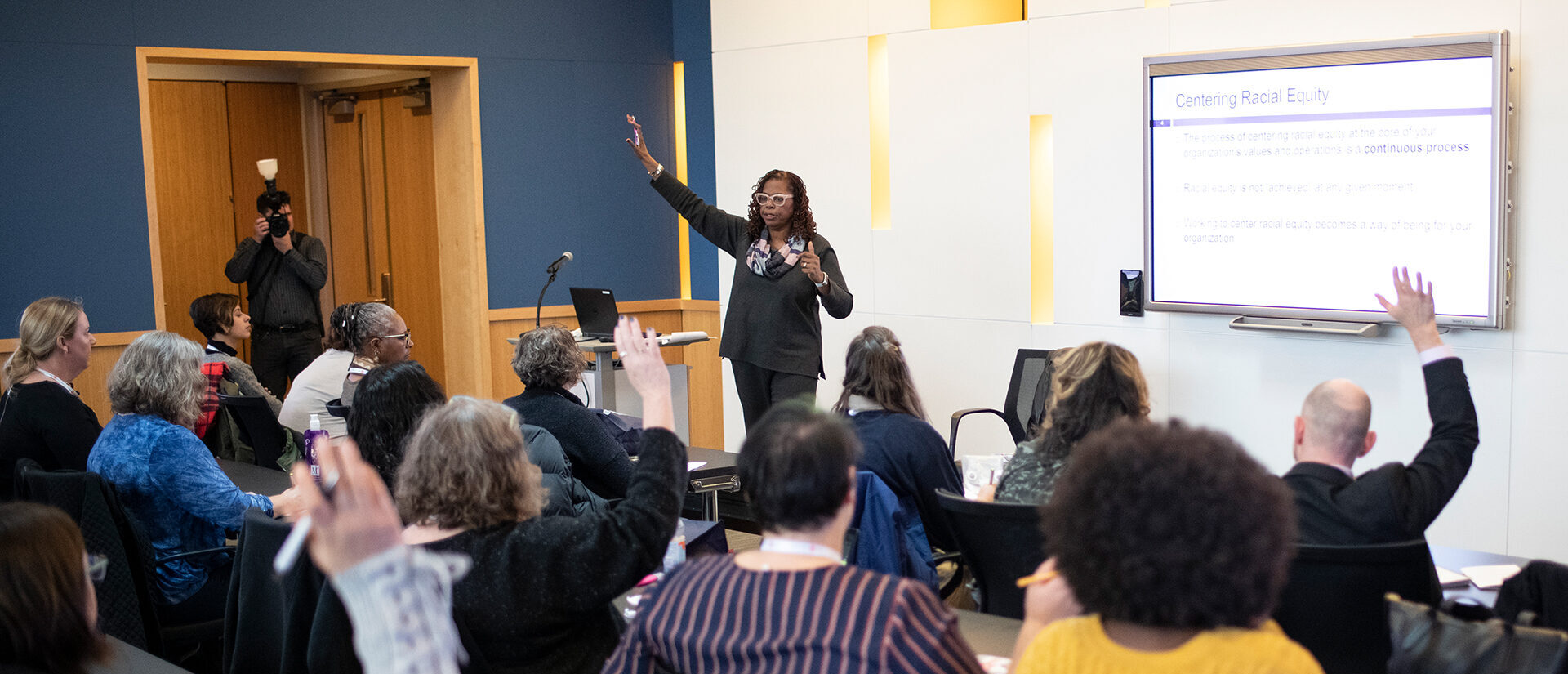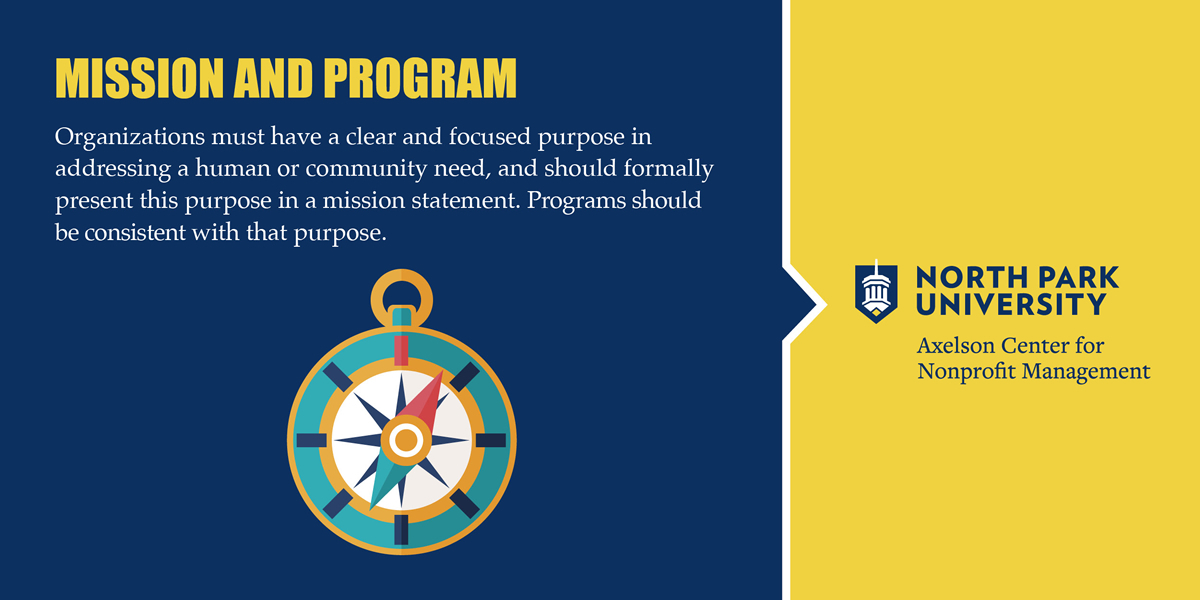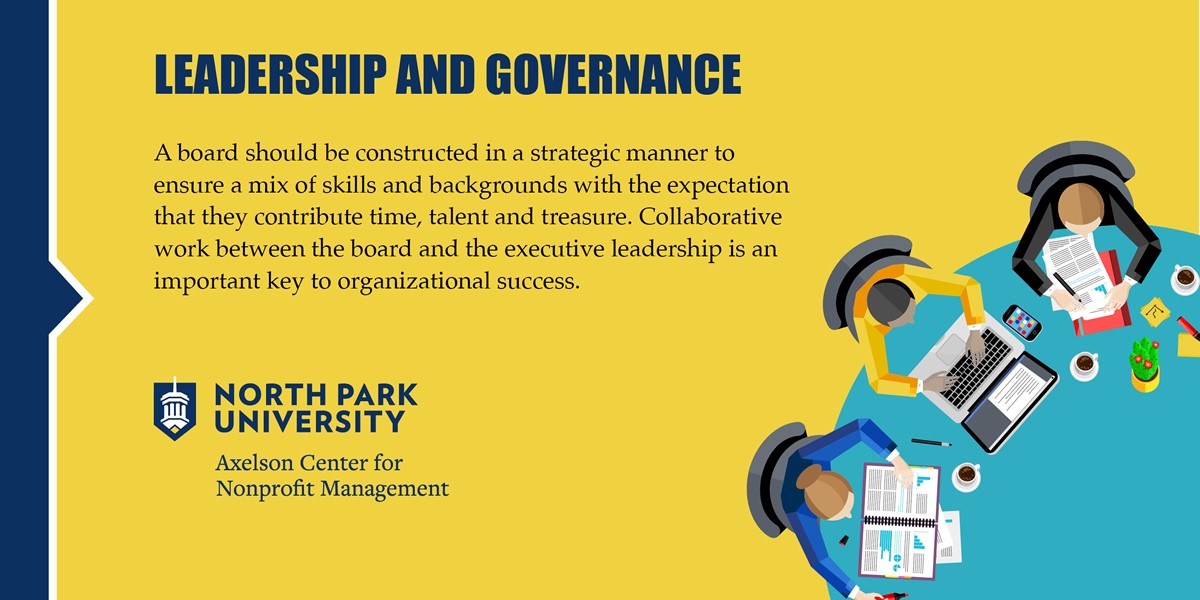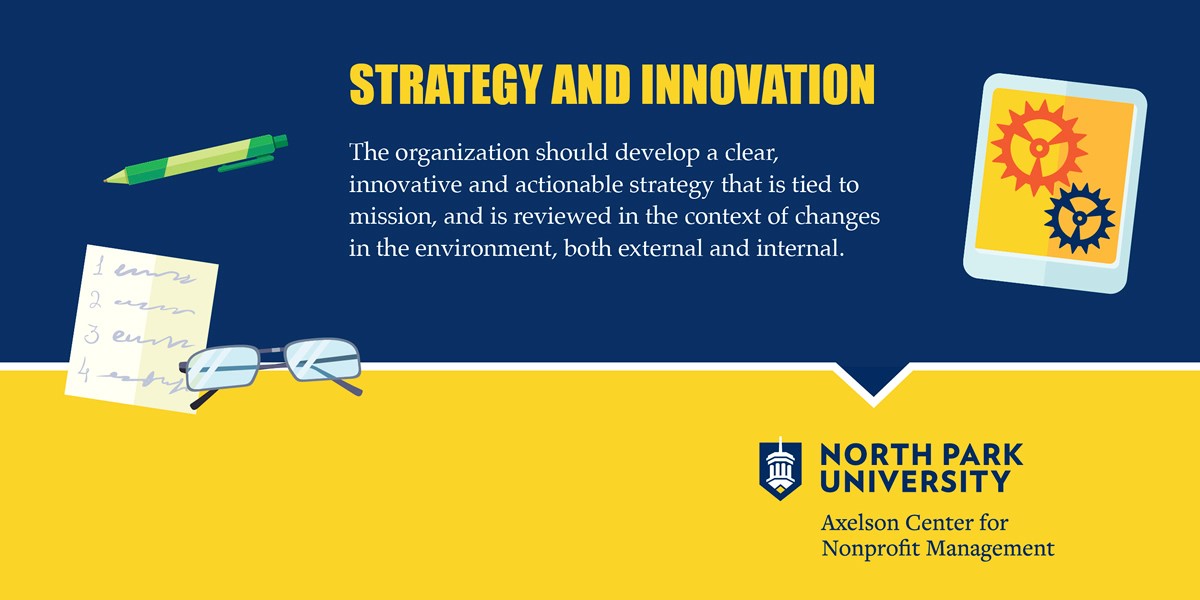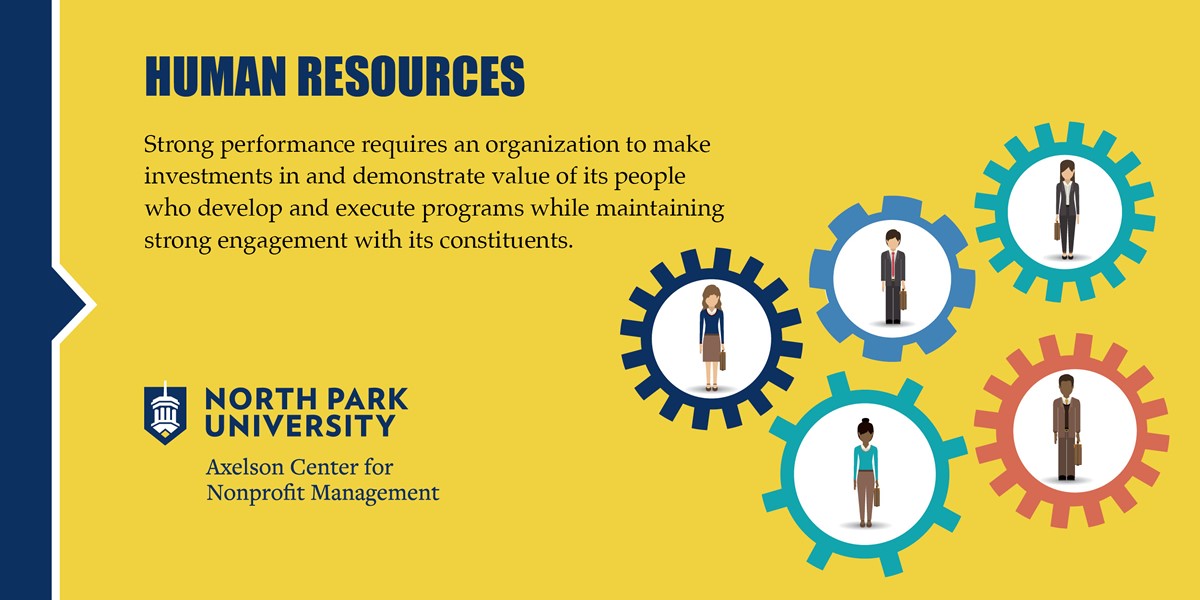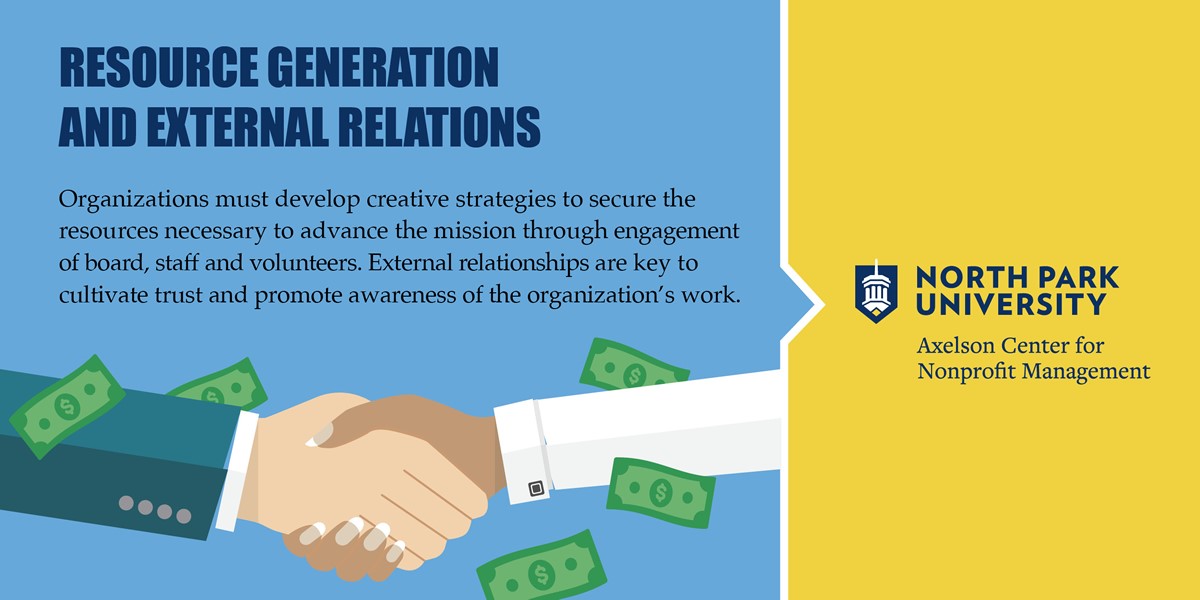Hallmarks of Nonprofit Managerial Excellence
The seven Hallmarks of Nonprofit Managerial Excellence℠ are the essential elements of a successful nonprofit organization. When implemented, the Hallmarks will help move an organization forward on the path of mission fulfillment and better position it for long-term sustainability.
Initially developed in 2002 as a tool to assess applications for the then-new , the Hallmarks have emerged as a general organizational assessment tool. Today, the Hallmarks serve as a formal foundation for all Axelson Center programs—a foundation that ensures that the overall capacity of the nonprofit sector is strengthened for those organizations and individuals participating in Axelson Center professional development programs:
- Sessions at our annual nonprofit conference
- for nonprofit staff and board
- , a three day intensive training for new nonprofit executive directors to prepare them to lead with nonprofit management best practices in mind
- Custom Training
Whether you’re starting a nonprofit or leading a century-old organization, we encourage you to engage with each of the seven areas represented by the Hallmarks—Mission & Program, Leadership & Governance, Strategy & Innovation, Human Resources, Financial Strength & Performance, Resource Generation & External Relations and Accountability & Integrity—and use them as a tool for organizational self-assessment.
The Axelson Center periodically revisits and updates the Hallmarks. Recently, we integrated diversity, equity and inclusion (DEI) elements across the Hallmarks. We encourage organizations to thoughtfully consider how DEI can be fully integrated into their own management practices.
Nonprofits must have a clear and focused purpose in addressing a human or community need, and should formally present this purpose in an organizational mission statement. The nonprofit’s activities and programs should be consistent with that purpose. Because community needs evolve, the organizational purpose and mission statement should be revisited periodically to ensure they are still relevant. Evaluation is a critical step in this process, and both the organization as a whole and its programs in particular should be regularly assessed. Outcome evaluation should demonstrate how the organization is meeting its programmatic goals and its mission using both quantitative and qualitative data.
With respect to Mission & Program, the top-performing nonprofits:
- Formally and specifically state their purpose (mission).
- Have a clear and compelling mission statement expressing the organization’s reason for existence.
- Conduct activities and programs consistent with this mission.
- Revisit their mission and strategy periodically and, when necessary, revise them.
- Have defined, cost-effective procedures for quantitative and qualitative culturally-sensitive evaluation of programs and projects in relation to the mission.
- Use the results of regular culturally-sensitive evaluations to strengthen organizational effectiveness.
- In executing their mission, deliver significant impact on a human or community need.
An organization’s governing board plays a critical role in its success. A board’s membership should be constructed in a strategic manner to ensure a mix of skills, social identities and diverse backgrounds appropriate for the organization’s needs and stage of development. Board members are selected with the expectation that they will contribute “time, talent and treasure” to ensure the necessary resources are secured, planning occurs in a strategic manner and appropriate policies are in place. Senior leadership is chosen based on the skills, experience, and alignment with mission and values in accordance with the organization’s developmental needs. Collaborative work between the board and the executive leadership is an important key to organizational success.
When it comes to managing a nonprofit that is strong in Leadership & Governance, the best nonprofits:
- Exemplify a commitment to diversity, equity and inclusion that is reflected in senior leadership, staff and board.
- Build diverse and inclusive boards comprised of individuals who possess the experience and skills needed for this specific organization to accomplish their mission. This includes functional and program-related expertise including lived experience.
- Have boards who’s commitment and involvement is reflected in time and/or financial contributions.
- Engage the board in long-term and short-term planning activities as necessary to determine (or affirm) the organization‘s mission, to define specific goals and objectives related to the mission and to evaluate the success of the organization’s programs toward achieving the mission.
- Establish policies enabling the board to effectively manage the organization; these policies are explicit and cover board procedures and term limits.
- Have boards who are responsible for their own operations, including the education, training and development of board members, periodic evaluation of their own performance, and new board member recruitment.
- Have systems in place for the board to conduct a periodic evaluation of the chief executive officer that will facilitate a regular assessment of the chief executive officer’s fit with the organization’s needs over time.
- Are led by a senior leadership team that possesses the skills and experience needed for the organization to accomplish its mission.
- Demonstrate evidence of an effective working relationship between the organization’s senior leadership and its board.
- Ensure a strategy is in place pertaining to executive succession to ensure organizational stability over time.
The organization should develop a clear, actionable strategy that is tied to mission, and is reviewed as environmental changes, both external and internal, occur. Programs are modified as needed and created where appropriate, in accordance with systems established to capitalize on opportunities. Innovation is encouraged throughout the organization: in systems, programs and existing and new partnerships.
Nonprofit organizations who embrace Strategy & Innovation have the following attributes:
- A clear, coherent and actionable strategy that directly relates to its mission.
- Performance indicators that are used for assessing the effectiveness of the overall strategy as well as specific programs and services.
- A regular process for reviewing and updating strategy in response to market needs and conditions.
- Clear evidence that existing programs have been efficiently and effectively grown to meet the needs of potential service recipients.
- A demonstrated commitment to ongoing and continuous improvement, including a system for feedback from service recipients.
- Systems or processes to cultivate new program ideas and to take advantage of new opportunities.
- An environment that supports continuous learning, including learning from failure, is encouraged.
- The ability to observe various signals and listen to new and innovative ideas that can emerge from many origins including under-represented populations.
- Consistent exploration of new avenues for collaboration with other entities, including nonprofit, for-profit or government.
It is people who advance a nonprofit’s mission. Strong nonprofit performance requires an organization to make and value its investment in the people who drive the organization’s programs and keep the organization engaged with its constituents. Investment in human resources is reflected in policies and procedures that support staff and volunteers in their ability to work effectively, receive adequate compensation and have access to opportunities for professional development. Strong nonprofit organizations create a culture where employees can be their authentic selves, feel respected and heard and are empowered to contribute to the overall mission based on their unique skills, ideas and experiences.
Nonprofits with strong Human Resources practices have the following characteristics:
- Written personnel policies and procedures, approved by the board, governing the work and actions of all employees and volunteers of the organization.
- Written job descriptions for employees that clearly identify roles and responsibilities.
- System in place for conducting annual performance evaluations for all employees.
- A professional development plan for the organization and effective practices for recruiting and retaining qualified and diverse (under-represented ethnic representation, specified professional skills, gender, age, ability, etc.) employees and volunteers.
- Succession plans for all upper management roles.
- Formalized and clear roles and responsibilities for all organizational entities.
- A complete organization chart that reflects current organizational realities.
- Effective use of benchmarking for compensation and salary planning.
- Hiring, promotion and compensation processes that are fair and allow equal access at the formal gateways of employment and advancement and ensure retention.
An organization’s financial strength is critical in supporting its ability to perform the work in advancing mission. Systems need to be in place to ensure that an annual budget is completed and approved by the board; internal controls are in place; regular financial reporting occurs. The organization constantly strives to maintain its financial health in order to achieve long-term sustainability. An awareness of changes in the external environment and a value for transparency are likewise important for financial strength and performance.
Nonprofits with top-notch Financial Strength & Performance have the following tools and practices in place:
- An annual budget—approved by the board—that guides organizational operations.
- A system for the accurate, clear, and timely reporting of financial information and data to internal and external constituencies.
- Financial reports that are audited on an annual basis by a Certified Public Accountant.
- Written financial policies (as appropriate to the organization’s size and complexity) governing such features as investment of organizational assets, internal control procedures, purchasing practices and unrestricted current net assets.
- An overall demonstration of solid financial performance and health, including attention to strategic cash flow management; concern with risk management; an awareness of key financial ratios; and compliance with generally accepted accounting practices, among other indicators.
Organizations must develop strategies to secure the resources necessary to advance the mission. Creative strategies are encouraged, and should engage board, staff and volunteers. External relationships are key to cultivating trust and promoting knowledge and awareness of the organization’s work. These elements can have a positive impact on resource generation.
The following attributes demonstrate strong Resource Generation & External Relations practices:
- A diversified and effective strategy in place for obtaining the resources necessary to advance the mission.
- Reasonable fundraising costs in relation to the size and complexity of the organization.
- A fundraising program that effectively utilizes board members, volunteers and other key constituents on its behalf.
- Creative and effective use of volunteers throughout the organization.
- Proactive interactions with the external world through collaboration, income generation ventures and other initiatives that strive to achieve diverse and inclusive representation.
- Meets the legal reporting requirements in all states in which the organization raises funds.
As recipients and stewards of public funds, transparency is an important attribute of well-managed nonprofits. The value that organizational leaders place on integrity in every element of the organization’s work can have a profound influence on organization success over time. Sharing mission, program and finance information with the public is a critical part of cultivating transparency and trust. Having appropriate policies in place to address potential conflicts of interest and ensuring compliance with legal and reporting requirements also plays a major role in fostering a culture of integrity throughout the organization.
Nonprofits who effectively put Accountability & Integrity principles into practice do the following:
- Provide the public with information about their mission, program activities and finances and ensure that organization staff members are accessible and responsive to members of the public who express an interest in their affairs.
- Have conflict of interest policies in place and routinely and systematically implement these policies to prevent actual, potential or perceived conflicts of interest.
- Periodically conduct an internal review of their compliance with existing legal, regulatory and financial reporting requirements.


